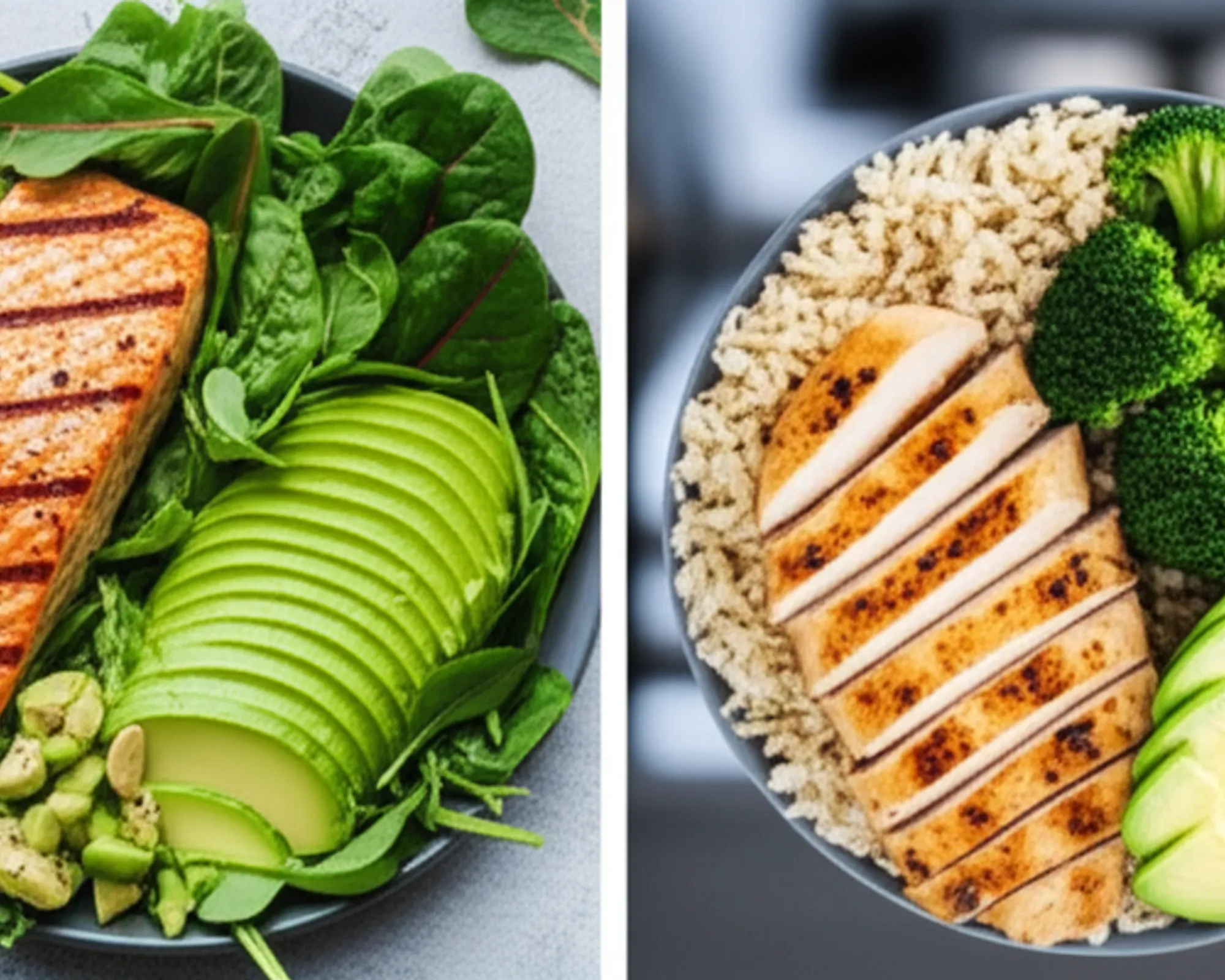How to Balance Macros for Muscle Gain and Fat Loss

Achieving that coveted physique – one that boasts impressive muscle definition while simultaneously shedding unwanted fat – is a goal for many fitness enthusiasts. However, it’s a journey often complicated by conflicting advice and the perceived difficulty of doing both at once. The secret, often overlooked but incredibly powerful, lies in understanding and strategically balancing your macronutrients: protein, carbohydrates, and fats. This comprehensive guide will break down how to optimize your macro intake to build muscle and incinerate fat simultaneously, or at least in a highly effective sequence.
The Foundation: Understanding Macronutrients
Before we dive into the balancing act, let’s quickly revisit what macros are and why each is vital:
- Protein: The Building Block. Essential for muscle repair, growth, and overall bodily functions. It’s also highly satiating, helping control hunger.
- Carbohydrates: The Energy Source. Your body’s preferred fuel. Carbs power your workouts, replenish glycogen stores, and support recovery. They come in complex (whole grains, vegetables) and simple (sugars) forms.
- Fats: The Hormone Regulator. Crucial for hormone production, nutrient absorption (especially fat-soluble vitamins), and providing a concentrated energy source. Healthy fats are vital for overall health.
Calculating Your Starting Point: Calories and TDEE
The first step in any body recomposition journey is to understand your caloric needs. Your Total Daily Energy Expenditure (TDEE) is the number of calories your body burns in a day, considering your basal metabolic rate (BMR), physical activity, and the thermic effect of food. Online calculators can give you an estimate, but consistent tracking and adjustment are key.
For muscle gain, a slight caloric surplus (250-500 calories above TDEE) is generally recommended to provide the energy needed for muscle synthesis. For fat loss, a moderate caloric deficit (300-500 calories below TDEE) is necessary to encourage your body to use stored fat for energy. The magic of body recomposition often happens in a very slight deficit or at maintenance, where the emphasis shifts to macro timing and composition.
Protein: Your Non-Negotiable Ally
When aiming for both muscle gain and fat loss, protein intake becomes paramount. A high protein diet:
- Preserves Muscle Mass: During a caloric deficit, adequate protein helps prevent muscle breakdown, ensuring the weight you lose is primarily fat.
- Supports Muscle Growth: Provides the amino acids necessary for muscle repair and hypertrophy when you’re in a surplus or even at maintenance with proper training.
- Boosts Satiety: Protein is the most filling macronutrient, helping to curb hunger and reduce overall calorie intake, which is invaluable during a fat loss phase.
- Increases Thermic Effect: Your body expends more energy digesting protein compared to carbs and fats, slightly increasing your daily calorie burn.
Recommendation: Aim for 1.6 to 2.2 grams of protein per kilogram of body weight (or 0.7 to 1 gram per pound of body weight). Distribute this intake evenly throughout the day across 3-5 meals.
Carbohydrates: Fueling Performance and Recovery
Carbohydrates are often demonized in fat loss discussions, but they are crucial for optimal performance and recovery, especially when building muscle. Don't cut them out entirely!
- Energy for Workouts: Carbs are your body's primary fuel source during intense exercise, allowing you to push harder and stimulate muscle growth.
- Glycogen Replenishment: After training, carbs refill your muscle glycogen stores, aiding in recovery and preparing you for your next session.
- Anabolic Signal: Insulin, released in response to carbohydrate intake, can have an anabolic (muscle-building) effect, particularly when paired with protein post-workout.
Recommendation: The ideal carb intake varies significantly based on activity level. For an active individual focused on body recomposition, a good starting point might be 2-4 grams per kilogram of body weight. Prioritize complex carbohydrates (oats, brown rice, quinoa, whole wheat, vegetables, fruits) and strategically time your higher carb meals around your workouts.
Fats: The Unsung Hero of Health and Hormones
Fats are essential and play numerous vital roles, despite being the most calorie-dense macronutrient. They should never be neglected.
- Hormone Production: Dietary fats are crucial for the production of hormones, including testosterone, which is vital for muscle growth in both men and women.
- Nutrient Absorption: Many essential vitamins (A, D, E, K) are fat-soluble and require dietary fat for proper absorption.
- Cellular Health: Essential fatty acids (omega-3 and omega-6) are vital for cell membrane integrity, brain function, and reducing inflammation.
Recommendation: Aim for 0.8 to 1.2 grams of fat per kilogram of body weight (or 0.35 to 0.5 grams per pound of body weight). Focus on healthy sources like avocados, nuts, seeds, olive oil, and fatty fish. During a fat loss phase, fat intake might be slightly lower but should never drop below 15-20% of your total daily calories.
The Balancing Act: Adjusting Macros for Your Goal
Here’s how to put it all together:
- Determine Your Caloric Goal: Slight surplus for primarily muscle gain, slight deficit for primarily fat loss, or maintenance for simultaneous recomp.
- Set Protein First: Always prioritize high protein (1.6-2.2g/kg). This is your foundation for both goals.
- Allocate Fats: Set your healthy fat intake (0.8-1.2g/kg) to support hormones and overall health.
- Fill Remaining Calories with Carbs: The rest of your calories will come from carbohydrates. This is the macro you'll most likely adjust based on your energy needs and the specific phase you’re in. Higher carbs on training days, slightly lower on rest days if necessary for a deficit.
For Muscle Gain (slight surplus): High protein, moderate-to-high carbs, moderate fats.
For Fat Loss (slight deficit): High protein, moderate carbs, moderate-to-low fats (but not too low).
Practical Application and Consistency
Knowing the numbers is one thing; applying them is another. Here are practical tips:
- Track Your Intake: Use a food tracking app for at least a few weeks to get a good understanding of your current intake and hit your targets.
- Meal Prep: Planning and preparing your meals in advance can significantly help you stick to your macro goals.
- Prioritize Whole Foods: Focus on nutrient-dense, unprocessed foods that provide vitamins, minerals, and fiber alongside your macros.
- Listen to Your Body: Pay attention to your energy levels, recovery, and hunger cues. Adjust your macros slightly if you feel overly fatigued, hungry, or if progress stalls.
- Be Patient and Consistent: Body recomposition is a slow process. Consistency over weeks and months yields results, not perfection for a few days.
Conclusion
Balancing macros for muscle gain and fat loss isn't about rigid deprivation; it's about strategic nutrition. By prioritizing protein, fueling your workouts with intelligent carb choices, and ensuring adequate healthy fats, you create an optimal environment for your body to transform. Remember, this is a personalized journey, so be prepared to learn, adjust, and celebrate your progress along the way. Your disciplined approach to macronutrients is the key to unlocking the physique you desire.


